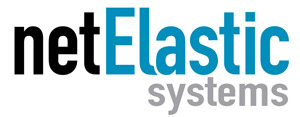According to a recent report from Meticulous Research, “The network functions virtualization (NFV) market is expected to grow at a CAGR of 34.9% from 2020 to 2027 to reach $122 billion by 2027.” This rapid growth is being fueled by the many benefits of NFV, including lower costs, increased flexibility, and greater scalability.
These benefits are the same reasons why many broadband providers are virtualizing their broadband network gateways (vBNGs). And when it comes to purchasing vBNG solutions, there are many vendors to choose from – including hardware router manufacturers, broadband access equipment companies, and software vendors.
With all of these vendors claiming to offer vBNG functionality, how can you separate one vendor from another? Before you go shopping for a Virtual BNG, you may want to consider the five items below on your vendor checklist:
1. Scalability
The COVID-19 pandemic has shined a bright light on network scalability with the rapid and unexpected increase in network traffic. Broadband providers with virtualized networks have been able to handle this sudden change in traffic since they can quickly turn on additional capacity.
The same can’t be said for hardware-based networks or hardware-based BNGs. While most large router manufacturers have now released virtual BNGs, their software is still locked into their proprietary hardware. And legacy hardware networks are inflexible and difficult to scale. vBNGs from broadband access equipment vendors are also tied to their hardware and suffer from vendor lock-in.
Software companies offering vBNGs running on commodity, x86 servers usually offer greater scalability and flexibility. There are no ties to proprietary hardware. Changes can be made in minutes, rather than the weeks it may take to upgrade or replace hardware-based appliances.
2. Costs
Virtual BNGs tied to proprietary hardware will normally be more expensive than BNGs running on commodity, white box servers. Also, be aware that some vendors require a minimum number of software licenses to be purchased. For small internet service providers (ISPs), these minimum purchase requirements can result in exorbitant costs while paying for licenses that may never be needed.
3. Open Systems
For broadband providers that purchase a Virtual BNG, interoperability with existing systems will be a key criteria. To ensure interoperability, providers should only consider vBNGs built on flexible, open software-based architectures. This is particularly important today with the increased level of network traffic and the need for flexible, scalable networks to quickly add capacity.
4. Performance

Virtual BNGs typically replace access routers in the network, so providers should review performance levels when comparing vBNG vendors. Particular attention should be placed on performance levels that have been verified by a reputable third-party. Performance claims based on in-house testing can be somewhat suspect.
5. Company Background and Focus
Given the growth of NFV, many vendors are entering the space. And many vendors are now offering Virtual BNGs. However, for many vendors this is just a product extension, a way to grab additional revenue.
In contrast, broadband providers may want to look at vendors with a history in software-defined networking (SDN) and NFV. Many providers today are seeking mature, production-ready vBNGs which deliver the requisite features of a BNG, in addition to new capabilities such as web-based applications to monitor how the network and vBNGs are performing. You should seek out vendors with a focus on vBNG and a history of vBNG innovation.
Putting it All Together
Broadband providers are moving to software-based networks and as a result, Virtual BNG adoption continues to grow. Before purchasing a vBNG, broadband providers should evaluate vendors on many factors, including scalability, costs, performance, openness, and vendor focus.
netElastic is a software company with deep roots in SDN and NFV, and was one of the first companies to offer a Virtual BNG. netElastic uses SDN technology to deliver market-leading scalability and flexibility with an optimized data plane and highly scalable design to support very small subscriber bases up to millions of subscribers. And netElastic and Intel have been working together to maximize vBNG performance, setting new levels of performance for Virtual BNGs.
To learn more about how netElastic vBNG can help increase network scalability and lower costs, please download the white paper on: “Next Generation Virtual BNGs: Preparing for the Exabyte Onslaught.”

